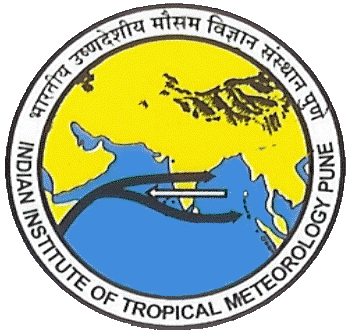Miso Monitoring
The MISO index method has been proposed by Suhas et al. [2013] to monitor the temporal evolution and amplitude of ISO. They have defined the eight-phase evolution of ISO similar to that of Madden-Julian Oscillation, described in Wheeler and Hendon [2004]. The eight-phase evolution of ISO is shown in Figure. This is an EOF analysis performed on an extended data matrix. The extended data matrix is constructed by temporal embedding of a number of lagged copies of the data that are appended to the original data to create the extended matrix.
The number of lags to be embedded depends on the dominant periodicity needed to be resolved and will filter out higher frequency variability. Since the dominant periodicity of the MISO in rainfall lies between 24 and 40 days, a lag of 15 days with 1day delay was found to be useful to resolve the smooth evolution of the MISO. The EOFs are constructed based on rainfall data averaged over the longitudinal band 60°-90°E spanning the latitudes 12°S-30°N for the 122 days of years 1998-2011. The EOF1 and EOF2 explain a combined variance of 23% and are separated from rest of the EOFs.
The northward propagation and real–time monitoring of MISO for the years 2007 and 2009 are shown in Figure. The systematic propagation of convective anomalies is obtained compositing precipitation for the days clustered in each octant or phase. In this figure, each octant or phase is represented as a pizza slice. Amplitude of MISO indices below the dotted unit circle (MISO12 + MISO22 = 1) is considered to be insignificant.
